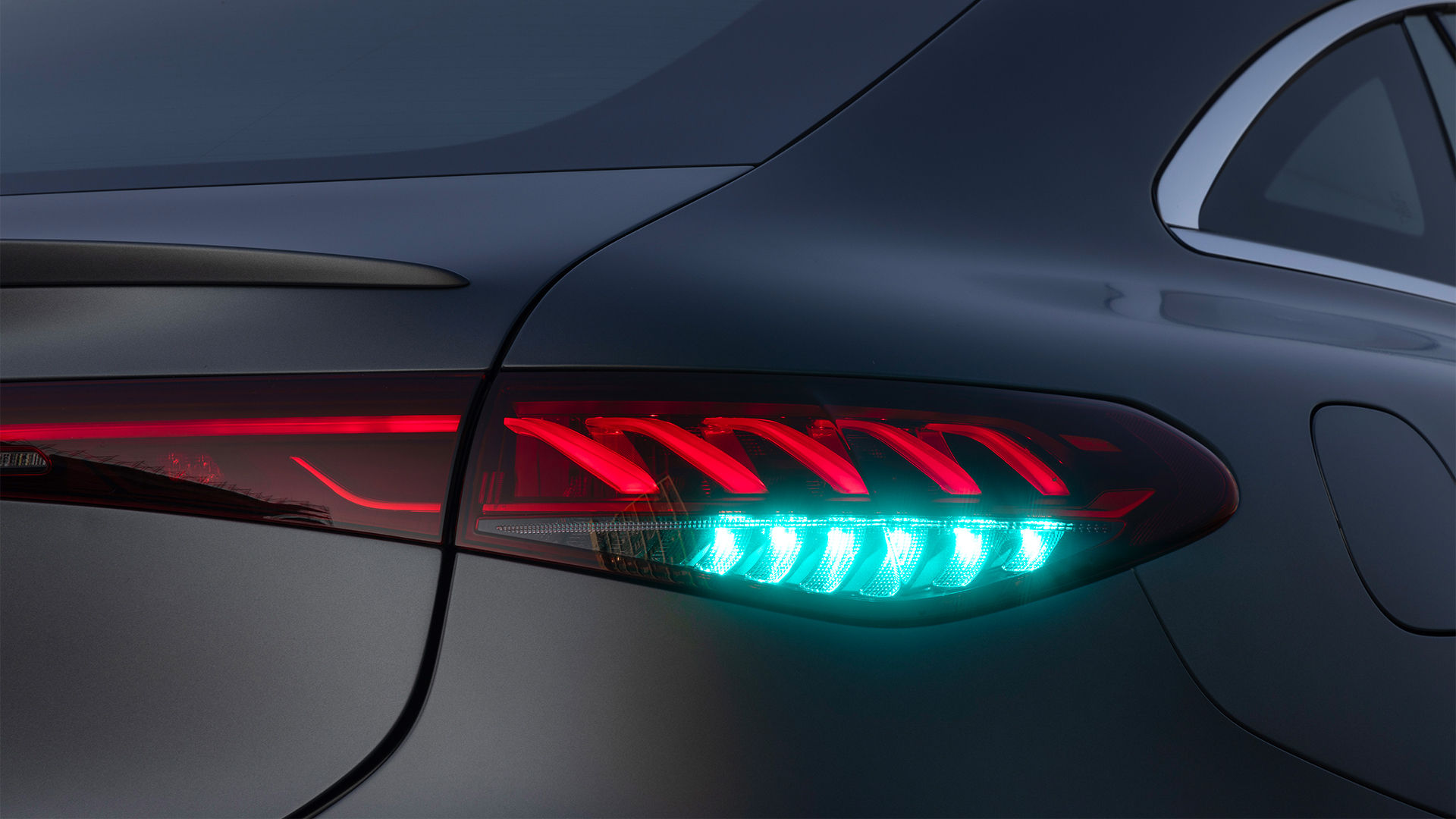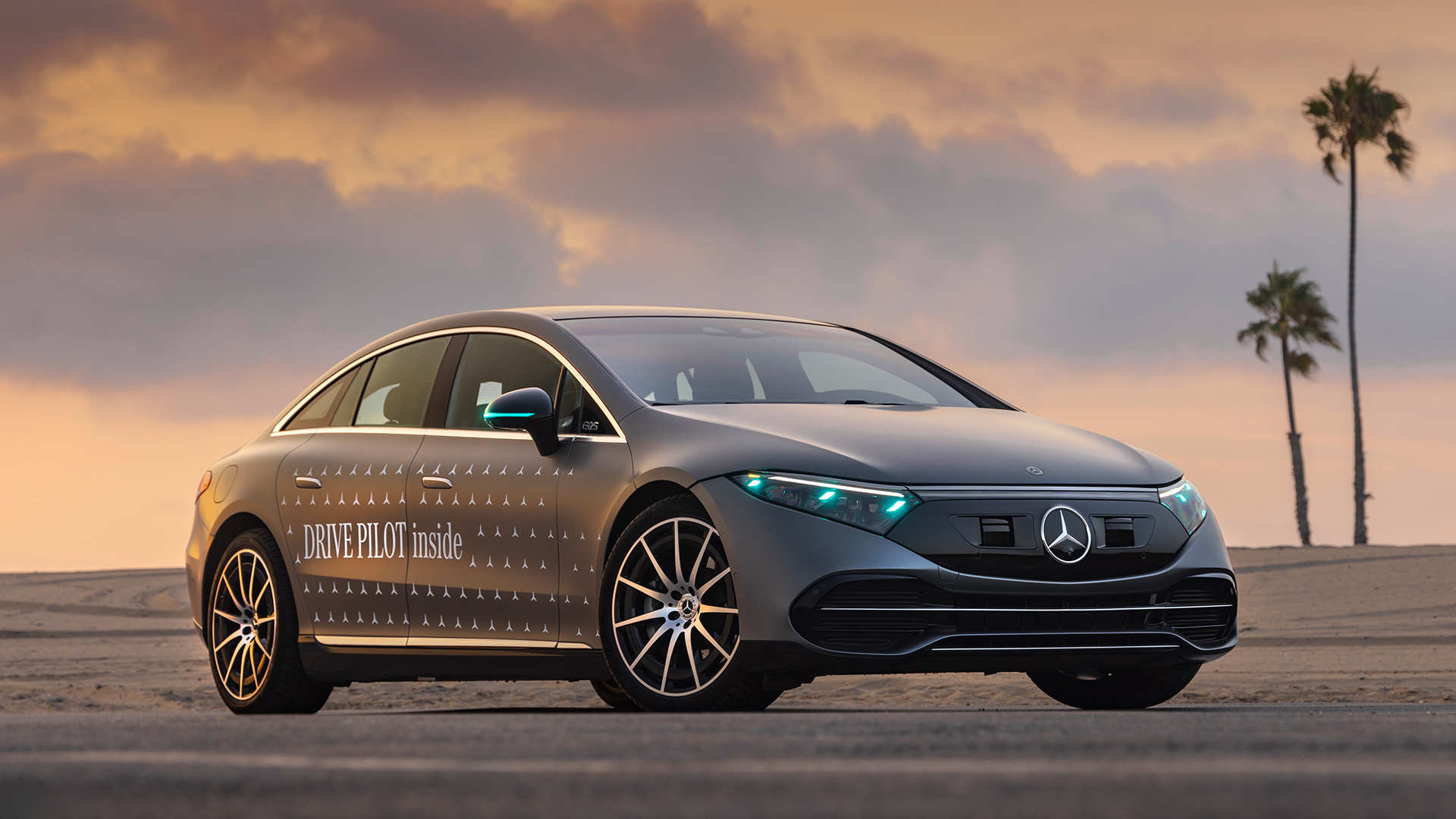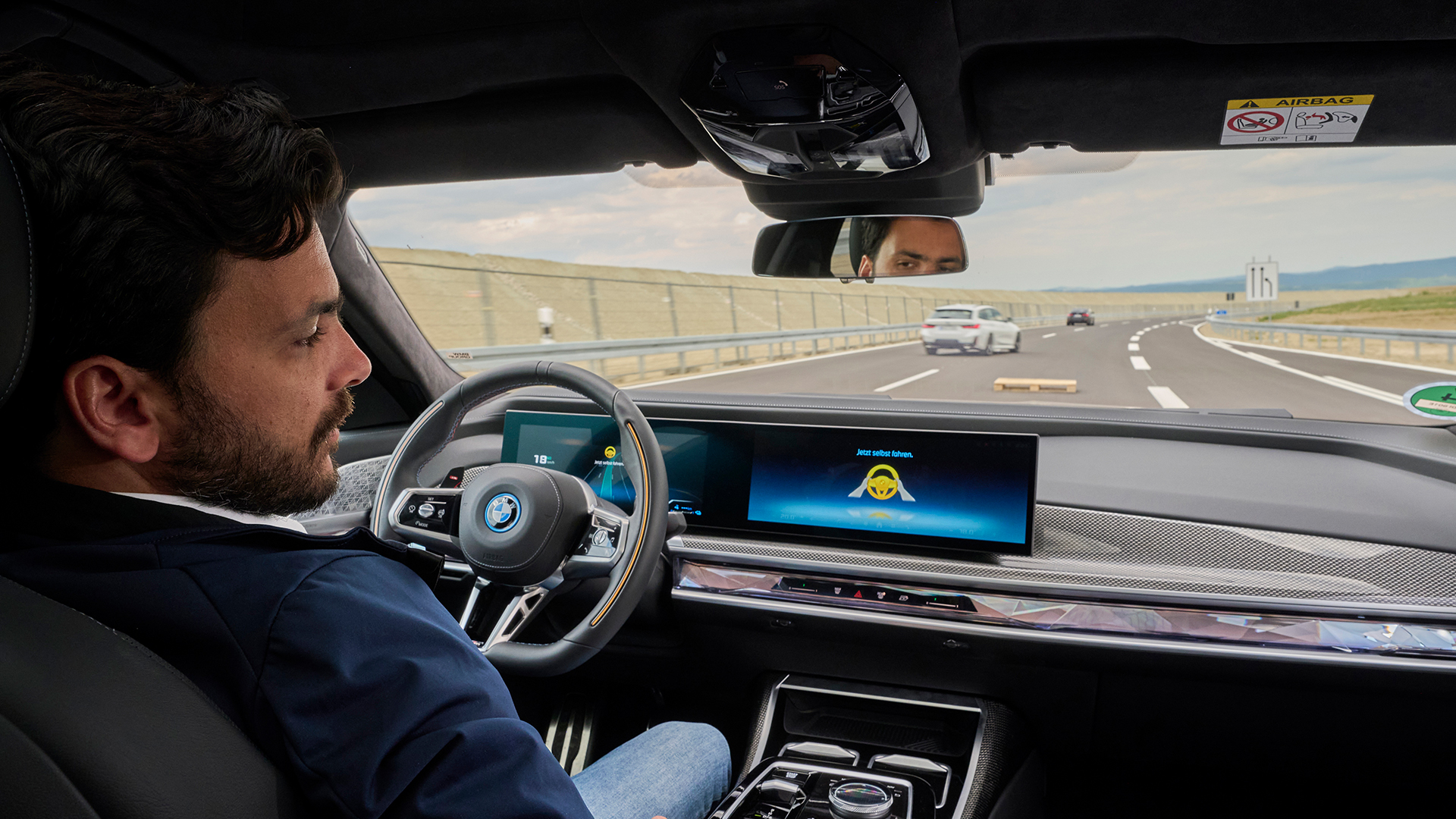Self-driving cars could get these turquoise taillights to warn you when they’re in autonomous mode
Mercedes-Benz tests LEDs that could become industry standard

Mercedes-Benz has become the first automaker to receive permits for bespoke exterior marker lights that will signify that the vehicle is running increased levels of autonomous driving on public roads.
In California, the permit allows for turquoise-colored exterior LEDs to be added to the front and rear lamps of vehicles undergoing testing. Meanwhile, in Nevada, a similar maker light will be added to Model Year 2026 EQS and S-Class production vehicles equipped with its Drive Pilot technology.
The company says the permits allow it "to gain important insights into the interaction of automated vehicles and other road users". In addition to this, it states that the inclusion of clear markers will "enhance public acceptance of automated driving and contribute to road safety".
Turquoise was the color of choice as it doesn’t clash with existing vehicle systems, nor can it be mistaken for emergency services lighting, as well as traffic lights and other traffic signals. This is why Mercedes also thinks the turquoise lights should become an industry standard, which could ultimately see them become far more common.
The German manufacturer believes indicating exactly when a vehicle is using high levels of autonomy will also allow law enforcement and police officers to identify the system's status and determine whether drivers are permitted to engage in secondary activities when behind the wheel.

This comes following the news of a number of accidents involving the alleged improper use of Tesla’s Auto-Pilot and Full Self-Driving systems, where the technology was deployed on roads where it is not legal or permitted to do so.
Currently, the turquoise lights will only be seen on testing vehicles in California equipped with Drive Pilot technology, while the company continues to examine SAE-Level 3 automated driving on freeways in North America.
Get daily insight, inspiration and deals in your inbox
Sign up for breaking news, reviews, opinion, top tech deals, and more.
However, it has stated that the Drive Pilot technology will be available on Model Year 2024 EQS Sedan and S-Class models in California in early 2024, even though the marker lights are still in a testing phase. In Nevada, the marker lights will be fitted to those same production models in 2026.
We reported earlier this year that the technology received type approval way back in 2021 in Germany, with BMW also recently catching up to its German rival with a similar system permitted in its home country this year.
Baby steps towards full self-driving

Although the news might feel like we are finally on the road towards high levels of autonomous driving, it's worth noting the parameters at which both the Mercedes-Benz Drive Pilot and BMW Personal Pilot L3 operate in Germany, where it has already been type approved.
While it is true that SAE Level 3 finally allows the driver to shift attention away from the road, allowing them to "edit emails" or engage "more deeply in telephone calls", according to BMW, the driver still needs to be ready to take over driving duties at any moment.
On top of this, the systems can only be activated when traffic is traveling at no more than 60km/h (37mph) and it is only permitted on motorways with structurally separated carriageways.
Essentially, it is an automated system for dealing with traffic jams, where the car can automatically speed up and slow down, as well as swap lanes if it feels the need to.
Both BMW and Mercedes-Benz have been very careful in the way they word its usage limitations, avoiding the suggestion of watching movies or updating social media profiles when behind the wheel.
you might also like

Leon has been navigating a world where automotive and tech collide for almost 20 years, reporting on everything from in-car entertainment to robotised manufacturing plants. Currently, EVs are the focus of his attentions, but give it a few years and it will be electric vertical take-off and landing craft. Outside of work hours, he can be found tinkering with distinctly analogue motorcycles, because electric motors are no replacement for an old Honda inline four.